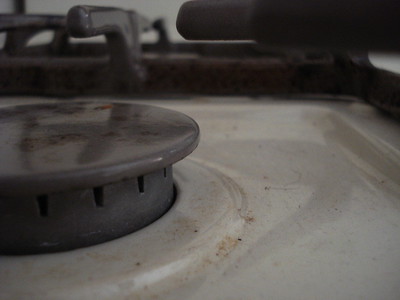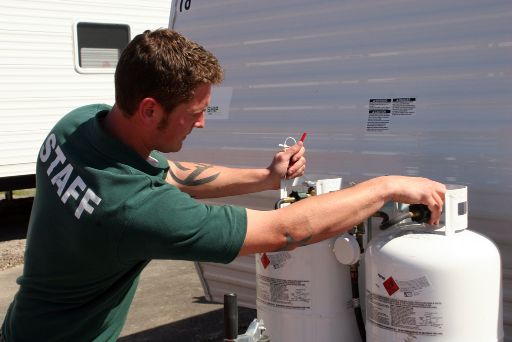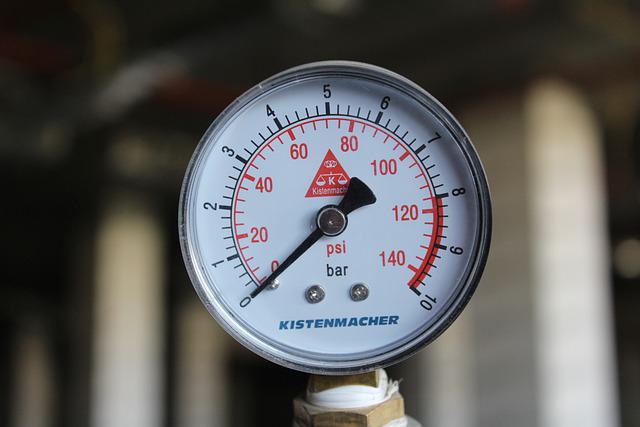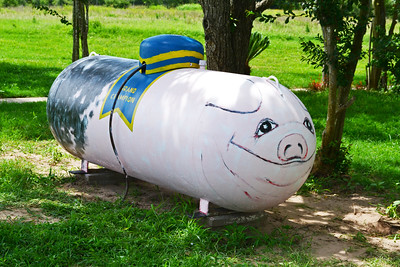
We’ve all had that moment of panic when we wonder if we left the stove on after cooking. But what happens when you leave a gas stove on without a flame for 30 minutes?
It’s an important question to consider, as gas stoves can be both incredibly convenient and potentially dangerous. In this article, we’ll discuss the mechanics of gas stoves, the risks of unburned gas, and how to prevent accidents.
So, if you want to make sure you and your loved ones stay safe in the kitchen, read on to learn all about the hazards of leaving a gas stove on without a flame and how to avoid them.
How Gas Stoves Work
To understand the risks associated with leaving a gas stove on without a flame, it’s essential to know how these appliances work. Gas stoves use natural gas or propane as fuel, which is supplied through a gas line connected to your home.
When you turn on the stove, gas flows through the burners and mixes with air, creating a flammable mixture. When you ignite the burner, the flame burns off the gas, producing heat for cooking.
The role of the flame in this process is crucial. It ensures that the gas is burned off safely, preventing the build-up of unburned gas in your home. However, when the stove is left on without a flame, the gas continues to flow without being burned, which can lead to dangerous situations.
The Risks of Unburned Gas
There are two main hazards associated with unburned gas in your home: health hazards and fire and explosion hazards. In terms of health risks, carbon monoxide poisoning and oxygen displacement are the most significant concerns.
Carbon monoxide is a colorless, odorless, and tasteless gas produced when fuels like natural gas don’t burn completely. Exposure to high levels of carbon monoxide can be life-threatening, as it interferes with the body’s ability to transport oxygen, leading to symptoms such as headaches, dizziness, and even death in severe cases.
Moreover, unburned gas can displace oxygen in the air, causing symptoms similar to those of carbon monoxide poisoning.
As for fire and explosion hazards, the unburned gas can be ignited by various sources, such as a spark from an electrical outlet or a lit cigarette. If the gas concentration reaches a certain level, it can lead to a dangerous explosion, causing severe damage and potentially injuring or killing those nearby.
Recognizing the Signs of a Gas Leak
Being able to recognize the signs of a gas leak is crucial in preventing accidents. One of the most common indicators is the smell of natural gas, which has a distinct, unpleasant odor often described as rotten eggs.
This scent is added to the gas intentionally to help people identify leaks. In some cases, you may also hear a hissing or whistling sound near the stove, indicating that gas is escaping.
In addition to these external signs, there are physical symptoms you may experience if exposed to a gas leak. These include headaches, dizziness, and nausea, which can be mistaken for other illnesses. If you notice any of these signs or symptoms, it’s essential to act quickly to prevent a potentially dangerous situation.
What to Do in Case of a Gas Leak
If you suspect a gas leak, take the following immediate actions to ensure your safety and that of those around you. First, open windows and doors to ventilate the area and disperse the gas.
Turn off the gas stove and the gas supply, if possible, to prevent further leakage. Evacuate the premises, ensuring that everyone is accounted for, and avoid using any electrical devices or creating sparks that could ignite the gas.
Once you’re at a safe distance from your home, call emergency services and report the gas leak. It’s essential to let professionals handle the situation, as they have the necessary equipment and expertise to address the issue safely.
Additionally, contact your gas company to inform them of the incident and follow their guidance on any further steps you should take.
Preventative Measures to Ensure Gas Stove Safety
To minimize the risks associated with gas stoves, there are several preventative measures you can take. Proper installation and maintenance are crucial for ensuring your stove operates safely.
This includes having your stove installed by a qualified technician and scheduling regular maintenance checks to identify and resolve any issues promptly.
Investing in safety devices is another way to protect yourself and your home from gas leaks. Gas leak detectors can alert you to the presence of gas in the air, while automatic shut-off valves can stop the flow of gas if a leak is detected.
These devices provide an extra layer of protection and can give you peace of mind.
Adopting safe habits is equally important for preventing gas-related accidents. Always ensure that the flame is lit when you turn on the gas, and double-check that the stove is off when you finish cooking.
Regularly inspect your stove for signs of wear or damage, such as cracked or frayed hoses, and address any issues as soon as possible.
How to Prevent Such Accident
To prevent accidents resulting from leaving your gas stove on without a flame, follow these steps:
- Be attentive while cooking: Always pay close attention when using your gas stove. Ensure that the flame is lit when you turn on the gas, and avoid distractions that might cause you to forget about the stove.
- Double-check after cooking: Once you finish cooking, double-check that the stove is turned off, and the flame is extinguished. Make this a habit every time you use the stove.
- Regular maintenance and inspection: Schedule regular maintenance checks for your gas stove to ensure all components are in good working condition. Inspect the stove for any signs of wear or damage, such as cracked or frayed hoses, and address any issues promptly.
- Proper installation: Ensure that your gas stove is installed by a qualified technician who follows all safety guidelines and regulations. A correctly installed stove is less likely to develop issues that could lead to gas leaks.
- Invest in safety devices: Consider installing gas leak detectors and automatic shut-off valves in your home. Gas leak detectors can alert you to the presence of gas in the air, while automatic shut-off valves can stop the flow of gas if a leak is detected.
- Educate your family: Make sure everyone in your household understands the importance of gas stove safety and knows how to use the appliance correctly. Teach them the signs of a gas leak and what to do in case of an emergency.
- Ventilation: Ensure that your kitchen is well-ventilated, with a range hood or exhaust fan to help disperse gas and reduce the risk of gas build-up.
- Avoid storing flammable materials near the stove: Keep flammable items such as paper towels, dishcloths, and plastic containers away from your gas stove to minimize the risk of fire.
By following these preventative measures, you can significantly reduce the risk of accidents resulting from leaving your gas stove on without a flame, ensuring a safer cooking environment for you and your loved ones.
Don’t Make This Mistake
Don’t make the mistake of leaving your gas stove on without a flame, as it can lead to severe health risks, fire, and explosion hazards. To avoid these potentially life-threatening situations, always ensure the flame is lit when the gas is on, and double-check that the stove is off after cooking.
By understanding the dangers associated with unburned gas, recognizing the signs of a gas leak, and following the preventative measures outlined earlier, you can significantly reduce the risk of accidents and create a safer environment for you and your loved ones.
Remember, attentiveness and awareness while using a gas stove are crucial to preventing accidents and ensuring a safe cooking experience.
Conclusion
Being vigilant about gas stove safety is essential to protect yourself, your loved ones, and your home. Leaving a gas stove on without a flame for 30 minutes can lead to serious health risks and fire and explosion hazards, so it’s crucial to be aware of the potential dangers and take appropriate preventative measures.
By understanding how gas stoves work, recognizing the signs of a gas leak, knowing how to respond in case of an emergency, and adopting safe habits, you can significantly reduce the risk of accidents and ensure a safer cooking experience.

Mike is an experienced propane technician with over 15 years of professional experience in the field. He has dedicated his career to helping customers with their propane needs, from installation to maintenance and repair. Together with Jeremy, he co-founded this website to provide useful information and guidance to customers seeking reliable propane services.




